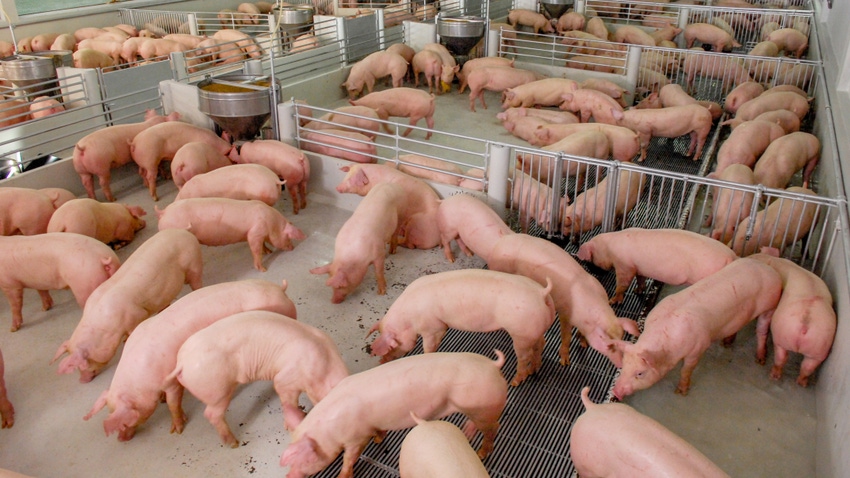Workshops discussed how imported vitamin and soybean products may relate to potential cross-border transmission of African swine fever.
August 6, 2019

African swine fever (ASF) is creating major changes in global livestock feed ingredient and food trade, with U.S. pork producers using swine feed ingredients -- including vitamins and soybean products -- imported from China, where the ASF pandemic continues to grow, according to the Swine Health Information Center (SHIC).
Responding to the potential threat posed to U.S. swine herd health by these imported ingredients — which may be vectors for ASF transmission — SHIC brought together vitamin manufacturers and the soybean industry for workshops at the University of Minnesota in April and July.
At each event, SHIC said the purpose was to discuss and better understand how imported vitamin and soybean products relate to disease transmission.
All documents from the workshops can be found on the SHIC website.
Participants at both workshops talked about ASF mitigation strengths and weaknesses in manufacturing as well as transportation of these feed ingredients, SHIC said in its announcement.
Workshop attendees are concerned about the high consequences of ASF or other foreign animal diseases (FADs) being discovered in the U.S., although both groups agreed that the risk for ASF infection cannot yet be quantified. SHIC said participants in the workshops encouraged the development of diagnostic testing capability for feed and feed ingredients as well as a response plan to support monitoring of these products.
According to the SHIC announcement, workshop participants said should ASF or another FAD be diagnosed in the U.S., a plan to assess and mitigate contamination within the feed supply chain is essential. They noted that more information is needed on the amount of feed ingredients being imported from each country as well as the FAD status.
A review of Canada’s approach to ASF control in the feed ingredient supply chain was presented during the soybean workshop. The Canadian government has developed and implemented a program with importation requirements as a result of its assessment of the risk of ASF virus transmission in grains, oilseeds and associated meals.
Representatives from the vitamin supply chain pointed out that there is little risk from reputable companies that are able to discuss and answer the "Questions to Ask Your Feed Supplier" posted on the SHIC website.
The vitamin supply chain report — prepared by Drs. Jerry Shurson and Pedro Urriola with the University of Minnesota — includes a detailed listing of vitamin manufacturers in China and their websites as well details on biosecurity procedures and third-party audits of many of these facilities, SHIC said.
Stakeholders were very interested in soybean meal mitigation processes (both extracting and expelling) to inactivate the ASF virus, with the evaluation of efficacy of all mitigants and related processes required, SHIC said.
The soybean group discussed the potential risk factors in the U.S. soy supply chain, which include soybean hulls and transportation cross-contamination. So, for soy products, a better understanding of logistics is needed. Importers of specialty soy products like organic soybean meal also need to be better informed about ASF risks and appropriate actions to prevent disease transmission, SHIC relayed. This includes biosecurity and pre-screening protocols for importers.
Funded by America’s pork producers to protect and enhance the health of the U.S. swine herd, SHIC focuses its efforts on prevention, preparedness and response. As a conduit of information and research, SHIC encourages the sharing of its publications and research for the benefit of swine health.
You May Also Like


.png?width=300&auto=webp&quality=80&disable=upscale)
